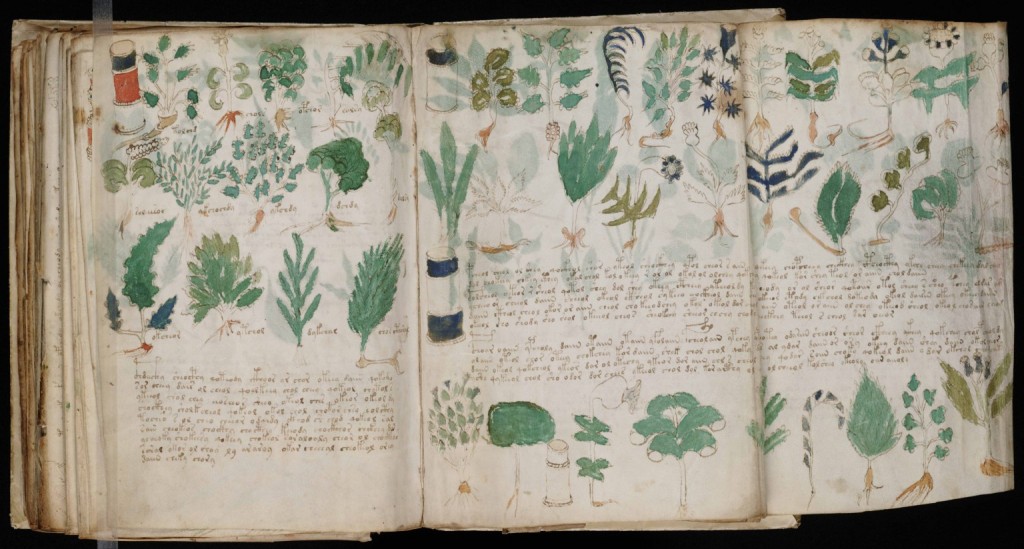The Voynich Manuscript, which appears to be written in gibberish, may actually be written in an extinct Mexican dialect of the Aztec language, Nahuatl.
Wilfrid Voynich famously found the mysterious manuscript in 1912 in an Italian monastery. With its hundreds of pages of undecipherable text, it includes illustrations of naked nymphs, astrological diagrams and drawings of plants. Until now, no one has been able to decode the text, nor identify the plants. For years an academic war has raged between scholars believing it to be a forgery and those, who continue to think it might be possible to decode. It stands to reason that the internet is literally overflowing with strange ideas and wacky conspiracy-theories. Lately, the manuscript has begun to figure in Computer-games like Assassin’s Creed IV: Black Flag published by Ubisoft, and Broken Sword: The Sleeping Dragon published by THQ.
Recently a historian of botany Delaware State University in Dover, Arthur O. Tucker, has come up with a new idea resulting in the identification of at least 37 of the 303 plants, six animals and one mineral from the region that lies between Texas, California and Nicaragua.
On the basis of these similarities, the scientists have concluded that the manuscript might belong to a select group of manuscripts, written in Nahuatl, the old Aztec language. Many of these stem from the work of Bernadino de Sahagún, a Franciscan Friar, Missionary priest and pioneering ethnographer 1499 -1590. Initially he was primarily interested in learning the ancient language of Nahautl in order to translate religious texts into the native tongue. Soon, however, he discovered that a literal translation did not make sense: he also had to translate “the meaning”. In order to accomplish that, he started out to work as an ethnographer recording the ancient lives and deeds of the Aztecs in his Historia general de las cosas de la Nueva España (in English: General History of the Things of New Spain). The most famous manuscript of these is the Florentine Codex, which in more than 2400 pages and with 2000 illustrations drawn by native artists documents the culture, the religious cosmology, ritual practices, society, economics and the history of the Aztec people. The scientists now believe that the Voynich manuscript may belong to the same category even though the text must be written in a slightly more Northern dialect.
One challenge, however, is the carbon-dating of the manuscripts, which has placed it in the beginning of the 15th century – long before the discovery of Columbus! Although C15 dating is notoriously tentative, it stands to reason that the controversies in view of this have not been laid to sleep. Not least since the research has been published in a journal normally dedicated to promoting scientific proof of herbal medicines. However, the review seems very thorough.
Nevertheless, it seems safe to believe that the jury is still out…
SOURCE:
A Preliminary Analysis of the Botany, Zoology, and Mineralogy of the Voynich Manuscript
By Arthur O. Tucker, Rexford H. Talbert
HerbalGram. The Journal of the American Botanical Council. 2013: 100 pp 70 – 75.
READ MORE:
The Voynich Manuscript is kept in the Beinecke Rare Book and Manuscript Library
